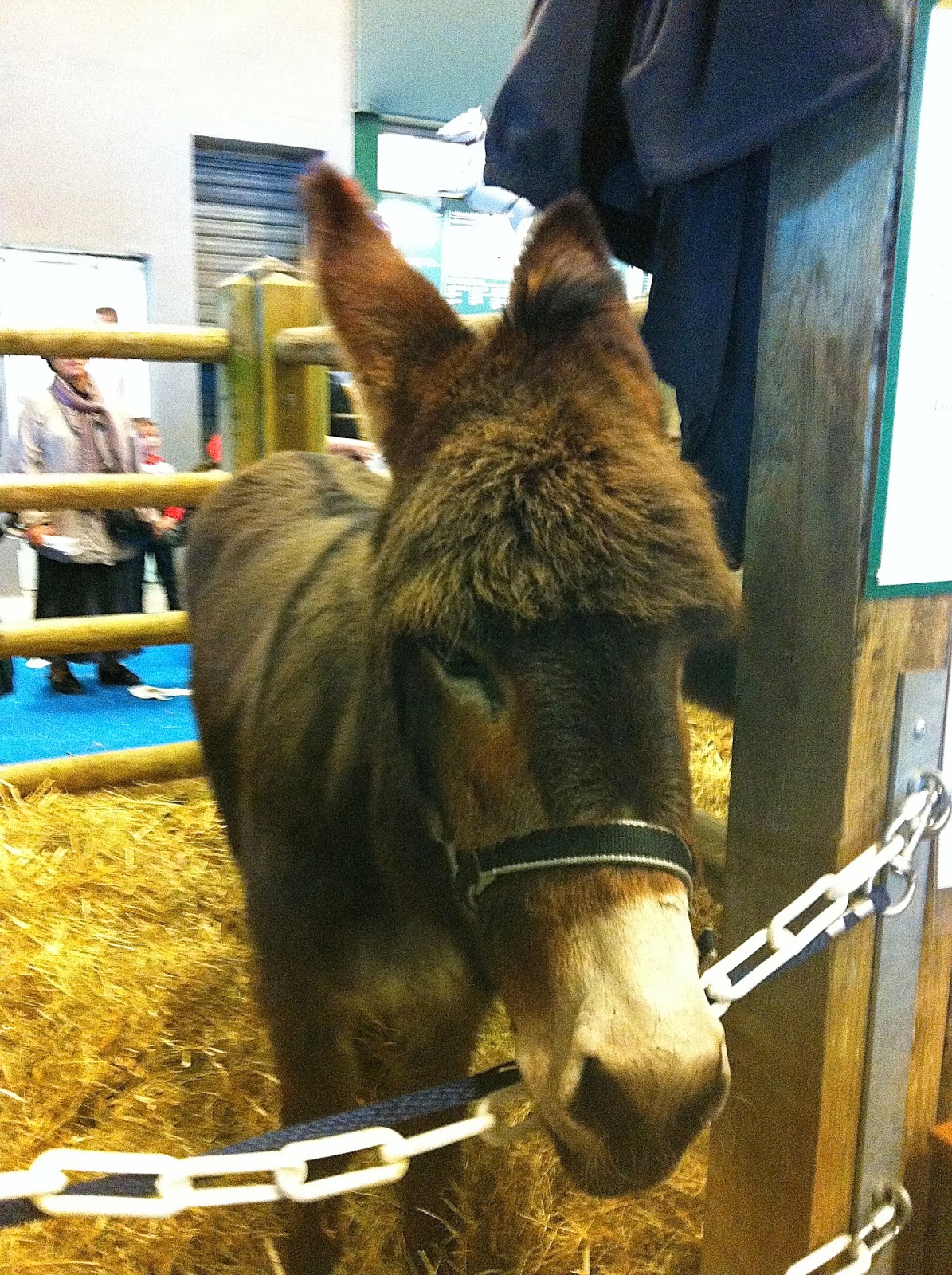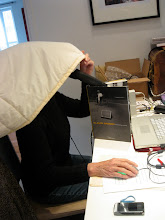Honestly, you can forget about Paris, or Bordeaux, Marseilles, or any other large city here. At its heart, France has always been, and will always be, an agricultural country. From the alpine slopes of the Savoie region to the oyster beds of Brittany, the soul of the nation lies in the production of the highest quality foods. The cities are just here to provide a place for us to savor and enjoy this wonderful food.
Over 700,000 people are expected to attend this year, and we were glad to be numbered among them!
Seven species of animals participate in the competition: cattle, sheep, goats, pigs, horses, donkeys, and dogs, totalling more than 4000 animals in all!
We made our way to the first pavilion, where we were greeted by this jolly roving group of Basque troubadours, singing their hearts out in a warm welcome.
Stepping inside, we were so taken aback at the crush of people that it took us a minute or two to figure out how to navigate through them and reach the pens where the animals were. Once we did, though, it was one amazing sight after another.
From adorable, snuggling lambs and their mamas...
...to some serious horns...
...lots of merino sheep -- all I could see here were skeins of beautiful wool!...
...to the scrutiny given to each animal as they are judged for lineage and genetic excellence.
Adjacent to the animal stalls and show rings were stalls promoting products made from the animals -- here rows of toasty looking sheepskin slippers...
...very pretty cutlery, made from horn...
...and let's not forget the most direct product, the meat itself -- rack of lamb, anyone?!
Leaving the sheep, we found ourselves in serious goat territory, brown goats, white goats...
...and of course where you have goats, you will also have goat cheese - my favorite!
On we went, oohing and aahing at this curl of jolly, chubby piglets...
...and these more somnolent juveniles.
Here's what the young man nearest us had prepared. The stuffed rabbit is on the left, the paté on the right and then a tray of delectable canapés and a row of what looked like ice cream cones stuffed with some creamy substance. We felt sure he would win!
However, after the judges conferred, they chose a 16 year old as the winner, the youngest to ever win. He received his red white and blue grosgrain ribbon and medallion that makes him an official member of this group. The young man near us looked so disconsolate. It reminded me of the heartbreak in that documentary Kings of Pastry.
Just when we thought we had seen everything in this pavilion, we found ourselves in the bovine section and face to face with Bella, the mascot of the whole fair. A beautiful, tawny color, she is a Tarantaise cow from the Haute-Savoie. These are a small-size breed very much at home in alpine settings amongst the eidelweiss. Here, they produce milk that in turn produces Beaufort and Tomme de Savoie cheeses.
I really love the Tomme cheeses, made from raw skim milk and with a subtle nutty flavor.
Another fairly small alpine cow is the Vosgienne, from the Vosges mountains in Alsace. They are great milkers, long lived and we can say thank to them for the distinct German Muenster cheese.
The big guys were these Salers breed, heavy duty, no nonsense, with serious horns. You can often find them in Normandy, specially on stud farms, because their grazing keeps nasty bugs out of the grass and therefore keeps the mares and their young foals healthy.
On we went, from the large to the tiny! The next pavilion included hatching chicks, and one small child who was mesmerized as the egg nearest her began to crack and open up.
It also included some handsome roosters like this Rhode Island Red...
...and this striking black and white one...
...and my favorite, the puffy, chubby Buff Orpington!
Yet another pavilion was devoted to food products. Here, a general agricultural competition awards prizes for food and wines in some 23 categories. This Basque stall of sausages and hams just took our breath away...
...until we got to this Foie Gras display, that is, next to which...
...this stand of Sauterne wines would, of course, be the perfect accompaniment! Anyone hungry yet...?
If so, you could line up and "eat local" as the sign suggests, served out of this adorable Citroën truckette.
Matthew opted for a dish of choucroute and a tall glass of beer from Alsace, before we went over to the equine pavilion!
Here, we admired handsome leather saddles and bridles...
...fragrant soap made from Asses milk...
...and we both loved this poster so much, Matthew bought some of the magic leather balsam for his briefcase and shoes!
By the time we found the actual horses, there wasn't much action going on in their ring, so we wandered through the stalls and really admired this Boulonnais horse. A handsome pure-bred cart horse, they were used to pull fishing boats along the canals, worked in the fields, and transported commercial products from town to town. Today, they are still considered a work horse, are harnessed to haul wood, etc., but can also be found in team competitions, or even pleasure riding.
Our final stop was to say "bonjour" to this cute donkey from Normandy, with her little furry bangs and the distinctive cross on her back.
I have to admit that by now, we were on our knees (you probably are as well, if you've read through this!) -- we had spent over 7 hours wandering around the fair, sampling foods, buying little bits and bobs of this and that. And still we didn't see everything! Ah well, there's always next year. Right now, we're ready for a glass of this St. Emilion Bordeaux, just one of over 16,000 wines entered into competition at the fair. Salut!
À bientôt!































































